My
List |
Addition Date
|
Target
|
Mission
|
Instrument
|
Size
|

|
1998-03-26 |
Jupiter
|
Galileo
|
Solid-State Imaging
|
900x1500x1 |

|
-
PIA00881:
-
Jupiter's Northern Hemisphere in a Methane Band (Time Set 1)
Full Resolution:
TIFF
(891.8 kB)
JPEG
(155.3 kB)
|

|
1998-03-26 |
Jupiter
|
Galileo
|
Solid-State Imaging
|
900x1500x1 |

|
-
PIA00880:
-
Jupiter's Northern Hemisphere in a Methane Band (Time Set 1)
Full Resolution:
TIFF
(791.2 kB)
JPEG
(117 kB)
|

|
1998-03-26 |
Jupiter
|
Galileo
|
Solid-State Imaging
|
900x1500x1 |

|
-
PIA00879:
-
Jupiter's Northern Hemisphere in the Near-Infrared (Time Set 1)
Full Resolution:
TIFF
(771.1 kB)
JPEG
(112.9 kB)
|

|
1998-03-26 |
Europa
|
Galileo
|
Solid-State Imaging
|
1710x1320x1 |

|
-
PIA00591:
-
Europa Ice Rafts
Full Resolution:
TIFF
(2.488 MB)
JPEG
(342 kB)
|

|
1998-03-26 |
Ganymede
|
Galileo
|
Near Infrared Mapping Spectrometer
|
445x525x1 |

|
-
PIA00878:
-
NIMS Observes Melkart Crater on Ganymede
Full Resolution:
TIFF
(21.67 kB)
JPEG
(17.45 kB)
|

|
1998-03-26 |
Io
|
Galileo
|
Solid-State Imaging
|
1000x800x3 |

|
-
PIA00703:
-
Active Volcanic Plumes on Io
Full Resolution:
TIFF
(817.7 kB)
JPEG
(42.25 kB)
|

|
1998-03-26 |
Jupiter
|
Galileo
|
Solid-State Imaging
|
903x787x3 |
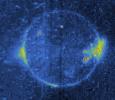
|
-
PIA00704:
-
Io Eclipse/Volcanic Eruption
Full Resolution:
TIFF
(574.4 kB)
JPEG
(71.49 kB)
|

|
1998-03-26 |
Europa
|
Galileo
|
Solid-State Imaging
|
719x732x3 |

|
-
PIA00702:
-
Ancient Impact Basin on Europa
Full Resolution:
TIFF
(1.976 MB)
JPEG
(116.2 kB)
|

|
1998-03-26 |
J Rings
|
Galileo
|
Solid-State Imaging
|
1151x800x3 |

|
-
PIA00701:
-
Jupiter's Main Ring/Ring Halo
Full Resolution:
TIFF
(281.3 kB)
JPEG
(62.93 kB)
|

|
1998-03-26 |
Jupiter
|
Galileo
|
Solid-State Imaging
|
1700x1700x3 |

|
-
PIA00700:
-
Jupiter's White Ovals/True and False Color
Full Resolution:
TIFF
(4.658 MB)
JPEG
(183.5 kB)
|

|
1998-03-26 |
Jupiter
|
Galileo
|
Solid-State Imaging
|
1275x800x1 |

|
-
PIA00873:
-
Jupiter's Long-lived White Ovals in a Methane Band (Time Set 2)
Full Resolution:
TIFF
(707.9 kB)
JPEG
(124.8 kB)
|

|
1998-03-26 |
Jupiter
|
Galileo
|
Solid-State Imaging
|
1275x800x1 |

|
-
PIA00872:
-
Jupiter's Long-lived White Ovals in a Methane Band (Time Set 2)
Full Resolution:
TIFF
(638.8 kB)
JPEG
(92.7 kB)
|

|
1998-03-26 |
Jupiter
|
Galileo
|
Solid-State Imaging
|
1275x800x1 |

|
-
PIA00871:
-
Jupiter's Long-lived White Ovals in the Near-Infrared (Time Set 2)
Full Resolution:
TIFF
(597.6 kB)
JPEG
(87.23 kB)
|

|
1998-03-26 |
Jupiter
|
Galileo
|
Solid-State Imaging
|
1275x800x1 |

|
-
PIA00870:
-
Jupiter's Long-lived White Ovals in Violet Light (Time Set 2)
Full Resolution:
TIFF
(395.8 kB)
JPEG
(65.02 kB)
|

|
1998-03-26 |
Jupiter
|
Galileo
|
Solid-State Imaging
|
1400x800x1 |

|
-
PIA00869:
-
Jupiter's Long-lived White Ovals in the Near-Infrared (Time Set 4)
Full Resolution:
TIFF
(420.8 kB)
JPEG
(67.45 kB)
|

|
1998-03-26 |
Jupiter
|
Galileo
|
Solid-State Imaging
|
1400x800x1 |

|
-
PIA00868:
-
Jupiter's Long-lived White Ovals in Violet Light (Time Set 4)
Full Resolution:
TIFF
(272.1 kB)
JPEG
(42.38 kB)
|

|
1998-03-26 |
Jupiter
|
Galileo
|
Solid-State Imaging
|
1700x800x1 |

|
-
PIA00867:
-
Jupiter's Long-lived White Ovals in the Near-Infrared (Time Set 3)
Full Resolution:
TIFF
(692.9 kB)
JPEG
(101.3 kB)
|

|
1998-03-26 |
Jupiter
|
Galileo
|
Solid-State Imaging
|
1700x800x1 |

|
-
PIA00866:
-
Jupiter's Long-lived White Ovals in Violet Light (Time Set 3)
Full Resolution:
TIFF
(453.6 kB)
JPEG
(61.34 kB)
|

|
1998-03-26 |
Jupiter
|
Galileo
|
Solid-State Imaging
|
1400x800x1 |

|
-
PIA00865:
-
Jupiter's Long-lived White Ovals in a Methane (Time Set 4)
Full Resolution:
TIFF
(383.5 kB)
JPEG
(60.58 kB)
|

|
1998-03-26 |
Jupiter
|
Galileo
|
Solid-State Imaging
|
1400x800x1 |

|
-
PIA00864:
-
Jupiter's Long-lived White Ovals in a Methane (Time Set 4)
Full Resolution:
TIFF
(398.5 kB)
JPEG
(55.3 kB)
|

|
1998-03-26 |
Jupiter
|
Galileo
|
Solid-State Imaging
|
1700x800x1 |

|
-
PIA00863:
-
Jupiter's Long-lived White Ovals in a Methane (Time Set 3)
Full Resolution:
TIFF
(652.5 kB)
JPEG
(93.73 kB)
|

|
1998-03-26 |
Jupiter
|
Galileo
|
Solid-State Imaging
|
1700x800x1 |
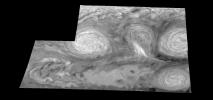
|
-
PIA00862:
-
Jupiter's Long-lived White Ovals in a Methane (Time Set 3)
Full Resolution:
TIFF
(687.6 kB)
JPEG
(98.21 kB)
|

|
1998-03-26 |
Jupiter
|
Galileo
|
Solid-State Imaging
|
1900x1000x1 |

|
-
PIA00861:
-
Jupiter's Long-lived White Ovals in Near-Infrared (Time Set 1)
Full Resolution:
TIFF
(1.036 MB)
JPEG
(141.6 kB)
|

|
1998-03-26 |
Jupiter
|
Galileo
|
Solid-State Imaging
|
1700x800x3 |
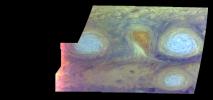
|
-
PIA00860:
-
Jupiter's Long-lived White Ovals in False Color (Time Set 2)
Full Resolution:
TIFF
(2.492 MB)
JPEG
(101.9 kB)
|

|
1998-03-26 |
Jupiter
|
Galileo
|
Solid-State Imaging
|
1700x800x3 |

|
-
PIA00859:
-
Jupiter's Long-lived White Ovals in True Color (Time Set 2)
Full Resolution:
TIFF
(1.943 MB)
JPEG
(63.89 kB)
|

|
1998-03-26 |
Jupiter
|
Galileo
|
Solid-State Imaging
|
1400x800x3 |

|
-
PIA00858:
-
Jupiter's Long-lived White Ovals in True Color (Time Set 4)
Full Resolution:
TIFF
(1.229 MB)
JPEG
(52.59 kB)
|

|
1998-03-26 |
Jupiter
|
Galileo
|
Solid-State Imaging
|
1400x800x3 |

|
-
PIA00857:
-
Jupiter's Long-lived White Ovals in False Color (Time Set 4)
Full Resolution:
TIFF
(1.522 MB)
JPEG
(67.93 kB)
|

|
1998-03-26 |
J Rings
|
Galileo
|
Solid-State Imaging
|
1152x376x3 |

|
-
PIA00658:
-
Jupiter's Ring Halo
Full Resolution:
TIFF
(52.69 kB)
JPEG
(44.59 kB)
|

|
1998-03-26 |
Io
|
Galileo
|
Near Infrared Mapping Spectrometer
|
1017x635x3 |
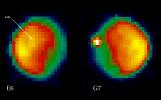
|
-
PIA00856:
-
NIMS Observes Increased Activity at Loki Patera, Io
Full Resolution:
TIFF
(912.3 kB)
JPEG
(40.86 kB)
|

|
1998-03-26 |
Europa
|
Galileo
|
Near Infrared Mapping Spectrometer
|
1326x863x3 |

|
-
PIA00855:
-
High Spatial Resolution Europa Coverage by the Galileo Near Infrared Mapping Spectrometer (NIMS)
Full Resolution:
TIFF
(869.3 kB)
JPEG
(98.64 kB)
|

|
1998-03-26 |
Europa
|
Galileo
|
Solid-State Imaging
|
820x1275x1 |

|
-
PIA00596:
-
Close-up of Europa's Trailing Hemisphere and similar scales on Earth
Full Resolution:
TIFF
(846.5 kB)
JPEG
(202.9 kB)
|

|
1998-03-26 |
Ganymede
|
Galileo
|
Near Infrared Mapping Spectrometer
|
1588x762x3 |
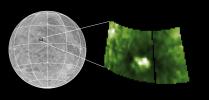
|
-
PIA00854:
-
Antum Crater
Full Resolution:
TIFF
(1.075 MB)
JPEG
(96.9 kB)
|

|
1998-03-26 |
Europa
|
Galileo
|
Solid-State Imaging
|
1600x1280x1 |

|
-
PIA00590:
-
Europa Triple Band
Full Resolution:
TIFF
(2.043 MB)
JPEG
(280.2 kB)
|

|
1998-03-26 |
Europa
|
Galileo
|
Solid-State Imaging
|
950x1200x1 |

|
-
PIA00851:
-
Cross-cutting Relationships of Surface Features on Europa
Full Resolution:
TIFF
(1.182 MB)
JPEG
(186.2 kB)
|

|
1998-03-26 |
Jupiter
|
Galileo
|
Near Infrared Mapping Spectrometer
|
1000x800x3 |

|
-
PIA00847:
-
NIMS Observes Europa's Shadow
Full Resolution:
TIFF
(636.5 kB)
JPEG
(25.2 kB)
|

|
1998-03-26 |
Europa
|
Galileo
|
Solid-State Imaging
|
1540x1200x1 |

|
-
PIA00587:
-
Close-up of Europa's Trailing Hemisphere
Full Resolution:
TIFF
(2.037 MB)
JPEG
(291.4 kB)
|

|
1998-03-26 |
Jupiter
|
Galileo
|
Near Infrared Mapping Spectrometer
|
1000x800x3 |

|
-
PIA00582:
-
Jupiter's Multi-level Clouds
Full Resolution:
TIFF
(415.2 kB)
JPEG
(39.65 kB)
|

|
1998-03-26 |
Europa
|
Galileo
|
Near Infrared Mapping Spectrometer
|
1650x1950x1 |

|
-
PIA00846:
-
NIMS E4 Observations of Europa Trailing Hemisphere
Full Resolution:
TIFF
(661 kB)
JPEG
(122.3 kB)
|

|
1998-03-26 |
Io
|
Galileo
|
Near Infrared Mapping Spectrometer
|
1600x1300x3 |

|
-
PIA00845:
-
NIMS: hotspots on Io during G2 (continued)
Full Resolution:
TIFF
(632.6 kB)
JPEG
(108.9 kB)
|

|
1998-03-26 |
Ganymede
|
Galileo
|
Near Infrared Mapping Spectrometer
|
1143x635x3 |

|
-
PIA00844:
-
NIMS Callisto Global Mosaic
Full Resolution:
TIFF
(934.2 kB)
JPEG
(63.81 kB)
|

|
1998-03-26 |
Jupiter
|
Galileo
|
Near Infrared Mapping Spectrometer
|
900x800x3 |

|
-
PIA00842:
-
Observations of Jupiter's thermal emission made by the Infrared Telescope Facility and the Galileo NIMS instrument
Full Resolution:
TIFF
(100.3 kB)
JPEG
(72.46 kB)
|

|
1998-03-26 |
Io
|
Galileo
|
Near Infrared Mapping Spectrometer
|
1300x850x3 |

|
-
PIA00841:
-
Distribution of Sulfur Dioxide Frost on Io
Full Resolution:
TIFF
(173.2 kB)
JPEG
(60.06 kB)
|

|
1998-03-26 |
Io
|
Galileo
|
Near Infrared Mapping Spectrometer
|
1900x1300x3 |

|
-
PIA00520:
-
NIMS: hotspots on Io during G2
Full Resolution:
TIFF
(541 kB)
JPEG
(103.4 kB)
|

|
1998-03-26 |
Callisto
|
Galileo
|
Near Infrared Mapping Spectrometer
|
1065x863x3 |

|
-
PIA00839:
-
Callisto Asgard Region as Viewed by NIMS
Full Resolution:
TIFF
(61.68 kB)
JPEG
(36.83 kB)
|

|
1998-03-26 |
Jupiter
|
Galileo
|
Near Infrared Mapping Spectrometer
|
1300x900x3 |

|
-
PIA00838:
-
First Near Infrared Mapping Spectrometer (NIMS) Image of the Great Red Spot
Full Resolution:
TIFF
(1.043 MB)
JPEG
(38.36 kB)
|

|
1998-03-26 |
Io
|
Galileo
|
Near Infrared Mapping Spectrometer
|
1525x1100x3 |

|
-
PIA00836:
-
Hotspots on Io During the Ganymede 2 Encounter
Full Resolution:
TIFF
(460.5 kB)
JPEG
(86.37 kB)
|

|
1998-03-26 |
Ganymede
|
Galileo
|
Near Infrared Mapping Spectrometer
|
1950x1500x3 |

|
-
PIA00500:
-
NIMS Ganymede Surface Map
Full Resolution:
TIFF
(1.156 MB)
JPEG
(170.1 kB)
|

|
1998-03-26 |
Europa
|
Galileo
|
Solid-State Imaging
|
1903x1864x1 |

|
-
PIA00295:
-
Dark Bands on Europa
Full Resolution:
TIFF
(2.465 MB)
JPEG
(494.4 kB)
|

|
1998-03-26 |
Jupiter
|
Galileo
|
Solid-State Imaging
|
414x800x1 |
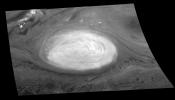
|
-
PIA00833:
-
Mosaic of Jupiter's Great Red Spot (Methane Filter)
Full Resolution:
TIFF
(409.5 kB)
JPEG
(76.8 kB)
|

|
1998-03-26 |
Jupiter
|
Galileo
|
Solid-State Imaging
|
4000x2500x1 |

|
-
PIA00832:
-
Mosaic of Jupiter's Great Red Spot (727 nm)
Full Resolution:
TIFF
(1.709 MB)
JPEG
(315.5 kB)
|

|
1998-03-26 |
Jupiter
|
Galileo
|
Solid-State Imaging
|
1400x900x1 |

|
-
PIA00830:
-
Mosaic of Jupiter's Great Red Spot (in the near infrared)
Full Resolution:
TIFF
(371.1 kB)
JPEG
(62.12 kB)
|

|
1998-03-26 |
Amalthea
|
Galileo
|
Solid-State Imaging
|
856x270x1 |

|
-
PIA01076:
-
Family Portrait of the Small Inner Satellites of Jupiter
Full Resolution:
TIFF
(62.18 kB)
JPEG
(8.331 kB)
|

|
1998-03-26 |
Thebe
|
Galileo
|
Solid-State Imaging
|
428x195x1 |

|
-
PIA01075:
-
Two Galileo Views of Thebe
Full Resolution:
TIFF
(34.69 kB)
JPEG
(4.182 kB)
|

|
1998-03-26 |
Amalthea
|
Galileo
|
Solid-State Imaging
|
798x573x1 |

|
-
PIA01074:
-
Four Galileo Views of Amalthea
Full Resolution:
TIFF
(172.8 kB)
JPEG
(19.66 kB)
|

|
1998-03-26 |
Callisto
|
Galileo
|
Solid-State Imaging
|
600x650x1 |

|
-
PIA01222:
-
Mass Wasting in Craters near the South Pole of Callisto
Full Resolution:
TIFF
(158.1 kB)
JPEG
(45.62 kB)
|

|
1998-03-26 |
Callisto
|
Galileo
|
Solid-State Imaging
|
800x1075x1 |

|
-
PIA01221:
-
Heavy Cratering near Callisto's South Pole
Full Resolution:
TIFF
(300.4 kB)
JPEG
(83.2 kB)
|

|
1998-03-26 |
Io
|
Galileo
|
Solid-State Imaging
|
346x346x3 |

|
-
PIA01220:
-
Io's Kanehekili Hemisphere
Full Resolution:
TIFF
(327 kB)
JPEG
(14.68 kB)
|

|
1998-03-26 |
Callisto
|
Galileo
|
Solid-State Imaging
|
725x550x1 |

|
-
PIA01219:
-
Large Craters in Callisto's Southern Hemisphere
Full Resolution:
TIFF
(162.9 kB)
JPEG
(41.72 kB)
|

|
1998-03-26 |
Io
|
Galileo
|
Solid-State Imaging
|
410x460x3 |

|
-
PIA00740:
-
Topography of Io (color)
Full Resolution:
TIFF
(550 kB)
JPEG
(26.36 kB)
|

|
1998-03-26 |
Io
|
Galileo
|
Solid-State Imaging
|
1152x659x1 |

|
-
PIA01218:
-
Mountains and Plateaus on Io
Full Resolution:
TIFF
(592.9 kB)
JPEG
(106.4 kB)
|

|
1998-03-26 |
Io
|
Galileo
|
Solid-State Imaging
|
410x460x1 |

|
-
PIA01217:
-
Topography of Io
Full Resolution:
TIFF
(150 kB)
JPEG
(30.38 kB)
|

|
1998-03-26 |
Jupiter
|
Galileo
|
Solid-State Imaging
|
800x1100x1 |

|
-
PIA00891:
-
Jupiter's Northern Hemisphere in the Near-Infrared (Time Set 4)
Full Resolution:
TIFF
(471.1 kB)
JPEG
(70.8 kB)
|

|
1998-03-26 |
Europa
|
Galileo
|
Solid-State Imaging
|
400x400x1 |
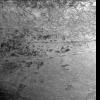
|
-
PIA00877:
-
Agenor Linea on Europa
Full Resolution:
TIFF
(172.8 kB)
JPEG
(34.64 kB)
|

|
1998-03-26 |
Callisto
|
Galileo
|
Solid-State Imaging
|
800x800x1 |

|
-
PIA00876:
-
Craters Near the South Pole of Callisto
Full Resolution:
TIFF
(193.9 kB)
JPEG
(49.17 kB)
|

|
1998-03-26 |
Europa
|
Galileo
|
Solid-State Imaging
|
400x400x1 |

|
-
PIA00875:
-
Thera and Thrace Macula on Europa
Full Resolution:
TIFF
(178.4 kB)
JPEG
(43.1 kB)
|

|
1998-03-26 |
Europa
|
Galileo
|
Solid-State Imaging
|
600x600x1 |

|
-
PIA00874:
-
Europa's Leading Hemisphere
Full Resolution:
TIFF
(242 kB)
JPEG
(52.12 kB)
|

|
1998-03-26 |
J Rings
|
Galileo
|
Solid-State Imaging
|
800x410x1 |

|
-
PIA00659:
-
Jupiter's Gossamer Ring
Full Resolution:
TIFF
(162.3 kB)
JPEG
(17.35 kB)
|

|
1998-03-26 |
J Rings
|
Galileo
|
Solid-State Imaging
|
1493x487x1 |

|
-
PIA00657:
-
Jupiter's Main Ring
Full Resolution:
TIFF
(107.1 kB)
JPEG
(21.63 kB)
|

|
1998-03-26 |
Europa
|
Galileo
|
Near Infrared Mapping Spectrometer
|
1000x800x1 |

|
-
PIA00853:
-
Europa 6th Orbit NIMS Data
Full Resolution:
TIFF
(103 kB)
JPEG
(28.36 kB)
|

|
1998-03-26 |
Europa
|
Galileo
|
Solid-State Imaging
|
635x680x1 |

|
-
PIA00588:
-
Europa Ridges, Hills and Domes
Full Resolution:
TIFF
(475.5 kB)
JPEG
(142.9 kB)
|

|
1998-03-26 |
Europa
|
Galileo
|
Solid-State Imaging
|
465x600x1 |

|
-
PIA00852:
-
Dome Shaped Features on Europa's Surface
Full Resolution:
TIFF
(327.4 kB)
JPEG
(100.9 kB)
|

|
1998-03-26 |
Europa
|
Galileo
|
Solid-State Imaging
|
800x1000x1 |

|
-
PIA00850:
-
Europa Under Stress
Full Resolution:
TIFF
(841.3 kB)
JPEG
(129.7 kB)
|

|
1998-03-26 |
Jupiter
|
Galileo
|
Near Infrared Mapping Spectrometer
|
700x900x1 |

|
-
PIA00848:
-
NIMS Views of a Jovian "Hot Spot"
Full Resolution:
TIFF
(106.1 kB)
JPEG
(19.02 kB)
|

|
1998-03-26 |
Europa
|
Galileo
|
Solid-State Imaging
|
920x720x1 |

|
-
PIA00586:
-
Pwyll Crater on Europa
Full Resolution:
TIFF
(739.8 kB)
JPEG
(119.4 kB)
|

|
1998-03-26 |
Jupiter
|
Galileo
|
Solid-State Imaging
|
970x844x1 |

|
-
PIA00843:
-
Jupiter's Belt-Zone Boundary (Methane filter, 732 nm)
Full Resolution:
TIFF
(356.4 kB)
JPEG
(62.08 kB)
|

|
1998-03-26 |
J Rings
|
Galileo
|
Solid-State Imaging
|
1108x300x1 |

|
-
PIA00538:
The Main Ring of Jupiter (clear filter)
Full Resolution:
TIFF
(108.3 kB)
JPEG
(11.91 kB)
|

|
1998-03-26 |
Jupiter
|
Galileo
|
Near Infrared Mapping Spectrometer
|
233x506x3 |

|
-
PIA00501:
-
NIMS Spectral Maps of Jupiter's Great Red Spot
Full Resolution:
TIFF
(261.8 kB)
JPEG
(14.41 kB)
|

|
1998-03-26 |
Jupiter
|
Galileo
|
Solid-State Imaging
|
600x600x1 |

|
-
PIA01230:
-
Motion in Jupiter's Atmospheric Vortices (Near-infrared filters)

Full Resolution:
|

|
1998-03-26 |
Jupiter
|
Galileo
|
Solid-State Imaging
|
640x485x1 |
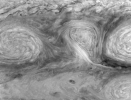
|
-
PIA01231:
-
Dynamics of Jupiter's Long-lived White Ovals

Full Resolution:
|

|
1998-03-06 |
Europa
|
Galileo
|
Solid-State Imaging
|
760x755x1 |

|
-
PIA00598:
-
Structurally Complex Surface of Europa and similar scales on Earth
Full Resolution:
TIFF
(354.4 kB)
JPEG
(93.85 kB)
|

|
1998-03-06 |
Europa
|
Galileo
|
Solid-State Imaging
|
800x800x1 |

|
-
PIA01212:
-
Near-Terminator Image of Europa
Full Resolution:
TIFF
(353.1 kB)
JPEG
(67.77 kB)
|

|
1998-03-06 |
Europa
|
Galileo
|
Solid-State Imaging
|
1018x1293x3 |

|
-
PIA01211:
-
Pwyll Crater on Europa
Full Resolution:
TIFF
(4.663 MB)
JPEG
(349.8 kB)
|

|
1998-03-06 |
Jupiter
|
Galileo
|
Solid-State Imaging
|
1300x1200x1 |

|
-
PIA01210:
-
Jupiter's Equatorial Region in a Methane Band (Time Set 4)
Full Resolution:
TIFF
(406.3 kB)
JPEG
(56 kB)
|

|
1998-03-06 |
Jupiter
|
Galileo
|
Solid-State Imaging
|
1300x1200x1 |

|
-
PIA01209:
-
Jupiter's Equatorial Region in the Near-Infrared (Time Set 4)
Full Resolution:
TIFF
(410.3 kB)
JPEG
(60.85 kB)
|

|
1998-03-06 |
Jupiter
|
Galileo
|
Solid-State Imaging
|
900x500x1 |

|
-
PIA01208:
-
Jupiter's Equatorial Region in Violet Light (Time Set 3)
Full Resolution:
TIFF
(119.7 kB)
JPEG
(15.3 kB)
|

|
1998-03-06 |
Jupiter
|
Galileo
|
Solid-State Imaging
|
900x500x1 |

|
-
PIA01207:
-
Jupiter's Equatorial Region in a Methane Band (Time Set 3)
Full Resolution:
TIFF
(198.3 kB)
JPEG
(25.75 kB)
|

|
1998-03-06 |
Jupiter
|
Galileo
|
Solid-State Imaging
|
1000x1000x1 |

|
-
PIA01206:
-
Jupiter's Equatorial Region in a Methane Band (Time Set 3)
Full Resolution:
TIFF
(351.7 kB)
JPEG
(48.35 kB)
|

|
1998-03-06 |
Jupiter
|
Galileo
|
Solid-State Imaging
|
1000x1000x1 |

|
-
PIA01205:
-
Jupiter's Equatorial Region in the Near-Infrared (Time Set 3)
Full Resolution:
TIFF
(370.4 kB)
JPEG
(55.99 kB)
|

|
1998-03-06 |
Jupiter
|
Galileo
|
Solid-State Imaging
|
1300x600x1 |
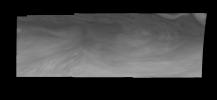
|
-
PIA01204:
-
Jupiter's Equatorial Region in Violet Light (Time Set 2)
Full Resolution:
TIFF
(193.9 kB)
JPEG
(24.83 kB)
|

|
1998-03-06 |
Jupiter
|
Galileo
|
Solid-State Imaging
|
1300x600x1 |

|
-
PIA01203:
-
Jupiter's Equatorial Region at 889 Nanometers (Time Set 2)
Full Resolution:
TIFF
(388 kB)
JPEG
(62.23 kB)
|

|
1998-03-06 |
Jupiter
|
Galileo
|
Solid-State Imaging
|
1300x1200x1 |

|
-
PIA01202:
-
Jupiter's Equatorial Region at 727 Nanometers (Time Set 2)
Full Resolution:
TIFF
(663.4 kB)
JPEG
(87.93 kB)
|

|
1998-03-06 |
Jupiter
|
Galileo
|
Solid-State Imaging
|
1300x600x1 |

|
-
PIA01201:
-
Jupiter's Equatorial Region in Violet Light (Time Set 1)
Full Resolution:
TIFF
(198.9 kB)
JPEG
(24.01 kB)
|

|
1998-03-06 |
Jupiter
|
Galileo
|
Solid-State Imaging
|
1300x600x1 |

|
-
PIA01200:
-
Jupiter's Equatorial Region in a Methane Band (Time Set 1)
Full Resolution:
TIFF
(410.1 kB)
JPEG
(83.37 kB)
|

|
1998-03-06 |
Jupiter
|
Galileo
|
Solid-State Imaging
|
1300x1200x1 |

|
-
PIA01199:
-
Jupiter's Equatorial Region in a Methane Band (Time Set 1)
Full Resolution:
TIFF
(673.1 kB)
JPEG
(85.38 kB)
|

|
1998-03-06 |
Jupiter
|
Galileo
|
Solid-State Imaging
|
1300x1200x1 |

|
-
PIA01198:
-
Jupiter's Equatorial Region in the Near-Infrared (Time Set 1)
Full Resolution:
TIFF
(725.1 kB)
JPEG
(105.3 kB)
|

|
1998-03-06 |
Jupiter
|
Galileo
|
Solid-State Imaging
|
572x960x1 |

|
-
PIA01197:
-
Haze observations near Jupiter's Limb at 60 degrees North
Full Resolution:
TIFF
(111.9 kB)
JPEG
(21.77 kB)
|

|
1998-03-06 |
Jupiter
|
Galileo
|
Solid-State Imaging
|
572x480x1 |

|
-
PIA01196:
-
Haze observations near Jupiter's Limb (60 degrees North, 295 degrees West)
Full Resolution:
TIFF
(71.63 kB)
JPEG
(13.17 kB)
|

|
1998-03-06 |
Jupiter
|
Galileo
|
Solid-State Imaging
|
572x480x1 |

|
-
PIA01195:
-
Hazes near Jupiter's Limb (60 degrees North, 315 degrees West)
Full Resolution:
TIFF
(73.35 kB)
JPEG
(11.75 kB)
|

|
1998-03-06 |
Jupiter
|
Galileo
|
Solid-State Imaging
|
1600x1200x3 |

|
-
PIA01194:
-
Three dimensional Visualization of Jupiter's Equatorial Region
Full Resolution:
TIFF
(3.52 MB)
JPEG
(102.9 kB)
|

|
1998-03-06 |
Jupiter
|
Galileo
|
Solid-State Imaging
|
1600x1200x3 |

|
-
PIA01193:
-
Three dimensional Visualization of Jupiter's Equatorial Region
Full Resolution:
TIFF
(3.135 MB)
JPEG
(101 kB)
|

 Planetary Data System
Planetary Data System




















































































































